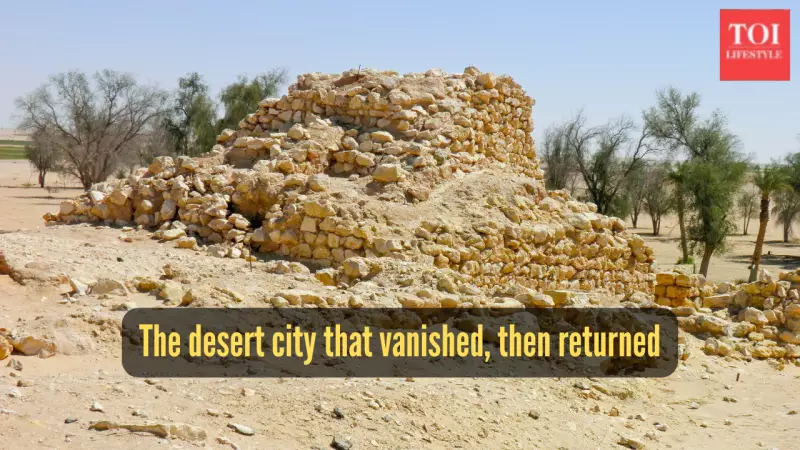
The Legend Beneath the Sands
Deep in Oman's Rub' al Khali desert, known as the Empty Quarter, lies one of archaeology's greatest mysteries - the Lost City of Ubar. This ancient settlement existed somewhere between myth and reality for centuries, described in Arab lore as a magnificent desert metropolis that vanished beneath the shifting dunes as divine punishment for its inhabitants' arrogance.
Archaeological evidence now confirms Ubar flourished during the first millennium BCE through early centuries CE, serving as a crucial hub for the lucrative frankincense trade. The aromatic resin from Boswellia trees, harvested in Oman's Qara Mountains, was transported by camel caravans to Mediterranean markets, making it as valuable as gold in ancient empires.
Rise and Fall of a Desert Metropolis
Ubar represented more than just a simple desert village. Archaeological findings indicate it was a strategically important settlement with fortifications, substantial infrastructure, and international connections. The city functioned as both a caravan assembly point and trading center where valuable goods changed hands across continents.
The city's disappearance has fascinated historians for generations. While ancient tales speak of divine retribution, scientific research points to multiple practical factors. Around the 4th-5th centuries CE, several events converged to seal Ubar's fate: the collapse of limestone caverns beneath the settlement, depletion of crucial underground water sources, shifting desert sands, and most importantly, changes in caravan routes that bypassed the city entirely.
Researchers believe the literal ground beneath Ubar gave way, with buildings sinking into collapsed subterranean chambers while desert sands gradually buried the remains. Over centuries, the once-prosperous city became completely invisible, remembered only in legends.
Modern Technology Resurrects Ancient History
The rediscovery of Ubar in the late 1980s and early 1990s represents a landmark achievement in archaeological methodology. An expedition team led by explorer Nicholas Clapp collaborated with NASA's Jet Propulsion Laboratory, using innovative technology that would revolutionize desert archaeology.
Space Shuttle Imaging Radar proved crucial in this discovery, possessing the unique ability to penetrate dry desert surfaces to reveal hidden features beneath. Satellite images clearly showed ancient camel caravan tracks converging at a specific location in Oman's Dhofar region - the area now known as Shisr.
Ground excavations following these satellite revelations uncovered impressive ruins: a fortress structure with eight tall towers and artifacts dating back approximately 4,000 years. Among the findings were pottery shards, incense burners, and evidence of trade connections extending to the Mediterranean and India.
These discoveries strongly supported the theory that Shisr was indeed the legendary Ubar, or at least centrally connected to its story. The convergence of multiple caravan routes at this location confirmed its historical importance as a trading nexus.
Ubar's Legacy and Modern Significance
Today, the archaeological site lies in Oman's Dhofar Governorate, approximately 170 kilometers north of Salalah. The journey to Ubar takes visitors through mountain passes into open desert, across shifting sands - an adventure that echoes the ancient caravan routes.
Beyond adventure tourism, Ubar offers profound lessons about civilization's relationship with environment and commerce. The city's fate demonstrates how prosperity built on specific natural resources or trade networks can vanish when those foundations shift. Ubar's existence depended entirely on the frankincense economy, and when that trade declined or routes changed, the city could not survive.
Often called the "Atlantis of the Sands" due to its dramatic disappearance, Ubar continues to captivate historians and archaeologists. While debates persist about whether Ubar was a single city or a network of desert settlements, its story remains powerful evidence of how environment, trade, human ambition, and time intersect to shape civilizations.
The discovery process itself has permanently changed archaeological approaches to desert sites, demonstrating the powerful combination of ancient legends with cutting-edge technology. What was once considered mere myth now stands supported by tangible evidence from both space and sand.





